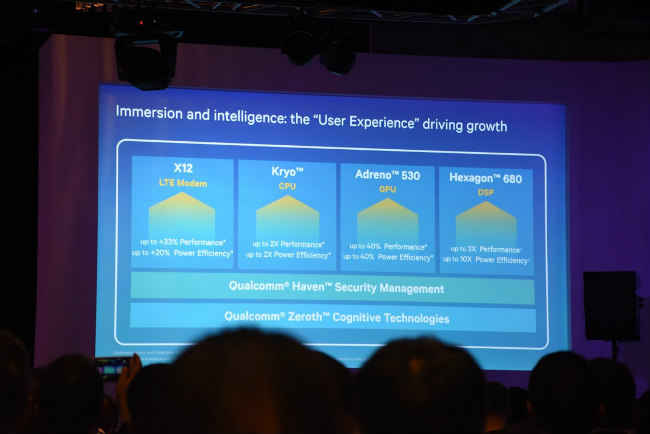Can the Snapdragon 820 stay cool in the face of heat?
After the monstrous Snapdragon 810 bombed and suffered from heating issues, Qualcomm is confident that the Snapdragon 820 is "meeting and beating OEM requirements"

Hours ahead of the impending launch of the Snapdragon 820, Qualcomm has been assuring the world that its upcoming flagship chipset, the much-discussed Snapdragon 820, is beating OEM requirements in terms of thermal performance. Tim McDonough, Qualcomm’s Head of Marketing, took to Twitter on Thursday, November 5, to state that the Snapdragon 820 will be unveiled on November 10, and it “is turning out amazing”.
 Survey
SurveyWith the Snapdragon 820, Qualcomm has a large section of its future at stake. While the Snapdragon 810 was indeed a powerful processor, its poor thermal performance led to a generally large outcry, with SD810-powered phones heating up to abysmal levels. As a result, the massive processing power of the Snapdragon 810 was vastly unused. With the Snapdragon 820, Qualcomm has brought forth a number of elements, and combined them all into the making of a flagship processor that befits Qualcomm’s status as the leading mobile chipset maker in the world.
To break down the Snapdragon 820 into six of its crucial elements, the list would comprise four custom Kryo cores, Hexagon 680 digital signal processor, the X12 LTE modem, Adreno 530 GPU, Haven security hub, and the Zeroth engine. The Kryo is Qualcomm’s custom-developed 64-bit quad-core CPU, capable of operating at maximum clock speeds of 2.2GHz. Integrated with the Symphony System Manager, the Kryo will streamline and assign tasks based on requirement between itself, the Adreno 530 GPU, the Hexagon 680 DSP, and Qualcomm’s Spectra image signal processor.
The Hexagon 680 DSP is a mini processor line lying beneath the Kryo core, to handle background tasks and light applications that require to run in the background. The Hexagon 680 takes the entire processing power required by background app on to itself, leaving the Kryo core to perform to its fullest in applications that require heavy processing power. The X12 LTE modem will integrate Carrier Aggregation and CAT.6 LTE Advanced band, leading to downlink speeds of upto 600Mbps, and uplink speeds of upto 150Mbps. An important tool, the Carrier Aggregation technique will be a crucial tool in optimising network strength, especially in India, where network stability is a contentious issue.
820 is turning out amazing and meeting or beating OEM thermal requirements. You'll feel cool having an 820 phone. https://t.co/MdlXiG3aGy
— Tim McDonough (@timamcdonough) November 5, 2015
Add the Zeroth engine to the new LTE modem, and you get machine learning and cognitive capabilities within the Snapdragon 820. The Zeroth engine is not bound to any specific section of the processor, and incorporates spontaneous learning into the processor. For instance, the Zeroth engine will track your network switching pattern across usage, deducing when to shift to recognised WiFi networks, and when to switch back to data. With this, Qualcomm aims to reduce processing load, and present smooth usage and improved battery life to SD820-powered devices. The Adreno 530 GPU is also Qualcomm’s fastest graphics processor, and it has claimed that the new GPU will provide 40% enhanced graphics performance, along with consuming 40% less power.
With all of these elements combined into one, the Snapdragon 820 does possess the ability of being the ultimate present generation processor to power mobile devices. However, rumours had recently surfaced about heating issues in the Snapdragon 820, but Qualcomm has firmly refuted such incidents. With today’s launch, new generation flagships like the Xiaomi Mi 5 may soon see launches, and with that, the answer to all the heat that speculations generate.
